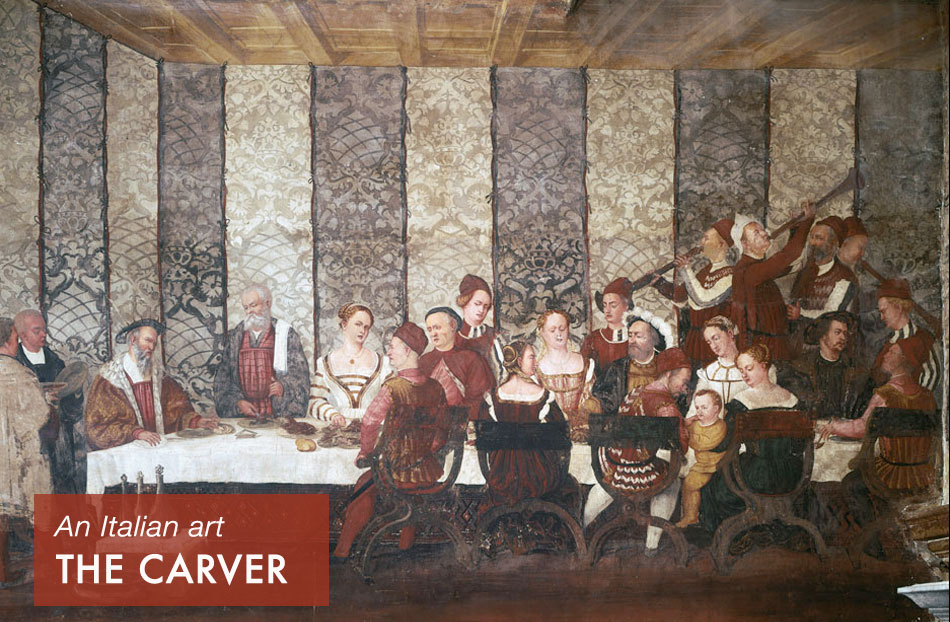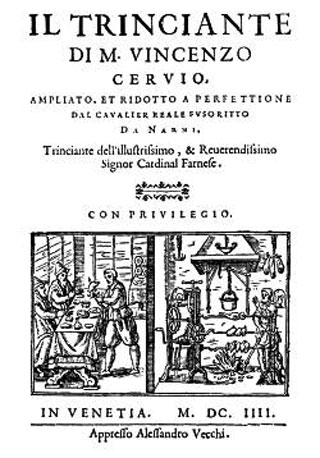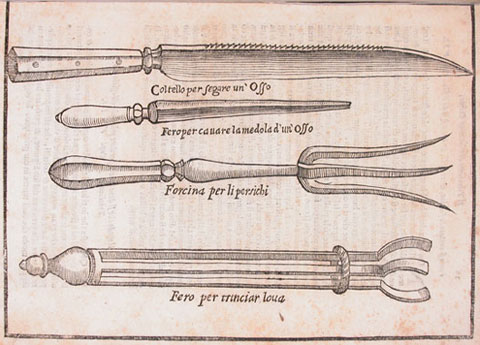

Vincenzo Cervio, Il Trinciante [The Carver], Venice 1604, frontispiece
The Carver's Utensils, in Il Trinciante di Vincenzo Cervio, Venice 1604, plate
Top: Marcello Fogolino (attributed to), Banquet Given by Bartolomeo Colleoni for Christian I of Denmark,, c. 1520–1530. Cavernago, Castello di Malpaga
The carver was a much appreciated professional figure in the Renaissance. The large carving knife had a straight tip and was used for cutting meat. It is still used today, primarily for sectioning animals and for raw meat.
In the canteens of lords and princes, the carver was the man tasked with cutting the food, particularly meat, but also other items, so that the diners could be served with succulent mouthfuls.
In Italy, carving foods became a real art, involving precise and carefully studied actions. "Air" carving was a much appreciated skill: the carver held up a fork with two or more prongs in his left hand, used to spear the food, while he carved it in a precise order with his right hand, dropping the pieces onto the plate ready for seasoning and serving to the lord and guests.
The most famous carver was perhaps Vincenzo Cervio, who perfected the cutting technique in the service of Cardinal Alessandro Farnese. Cervio collected his professional knowledge in his book Il trinciante [The Carver], published for the first time in Venice in 1581. As well as providing highly detailed information on utensils, cuts and actions, he recommended a sound education and good morals for the perfect carver.

